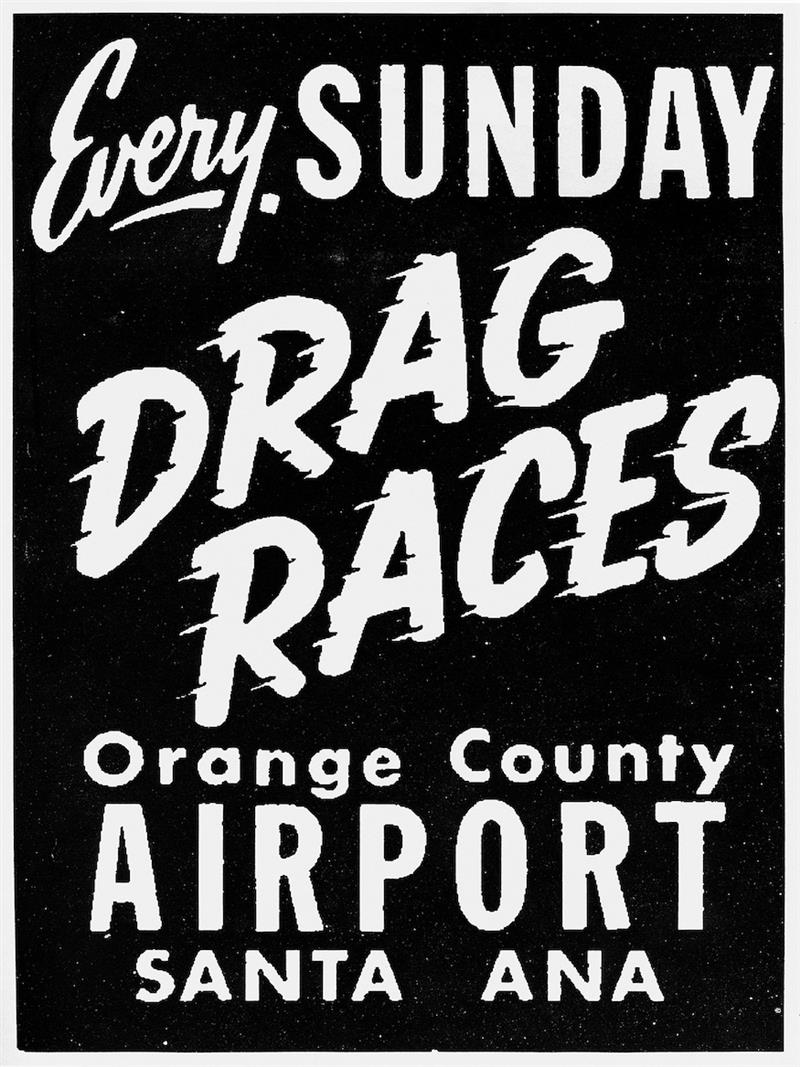
What Happened In Santa Ana On July 2, 1950?
Organized drag racing celebrates its 70th birthday on July 2, 2020. On that day in 1950 the first “official” drag race took place at an out-of-commission Army airbase in Santa Ana, California. Soon that airbase was established as Santa Ana Drags, the world’s first commercial dragstrip. When it closed nine years later, drag racing had become a nationwide sport with established rules and classes, national championships, and a major sanctioning body.
Today, drag racing has evolved into a huge worldwide motorsport—and it also still exists at a smaller grassroots level not much different from what those guys in Santa Ana were doing 70 years ago.
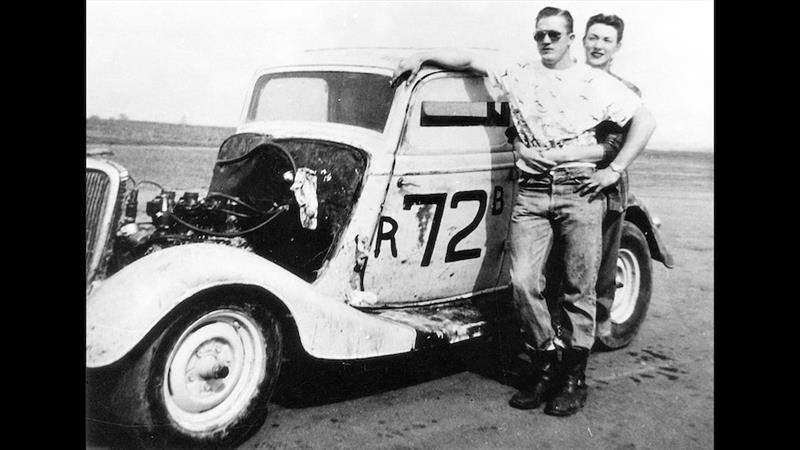
When Did Drag Racing Really Start?
To say when drag racing began involves a lot of speculation about an activity that, in all likelihood, has been around since the creation of the second automobile. In the April 1950 issue of HOT ROD magazine, editor Wally Parks (one year before establishing the NHRA) wrote an article describing “controlled drag races” as an alternative to the type of racing that hot rodders had been doing on the dry lakes of Southern California since the ’30s. Parks’ description might seem foreign to today’s drag racing fans, such as his explanation that the “number of entrants in each heat race depends on the width of the course.”
I figured that the best way to find out some facts about the birth of drag racing was to talk to people who were actually there. About 12 years ago, I got in touch with Leslie Long, one of Southern California’s early hot rodders. Leslie was on a personal mission to chronicle the history of drag racing at Santa Ana, collecting race results and photos from the strip’s short run from 1950 to 1959. He said if I met him at his favorite diner in Santa Ana and bought him a cup of coffee, he’d tell me all about it.
We ended up having several meetings. Our conversation at the first one was the basis for a May 2009 Rod & Custom magazine article called “The Guys Who Invented Hot Rods,” about dry lakes racing before World War II. At later meetings, Leslie talked about drag racing at Santa Ana, sharing stories as well as the photos you’re seeing here. These pictures, and the following information, originally appeared in the November 2009 issue of R&C.
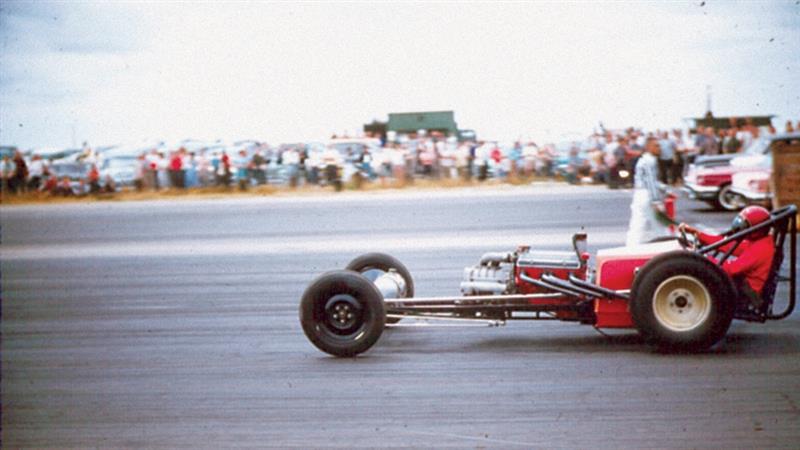
Clues
Was Santa Ana really the first official drag race? In the spring of 1949, a year before Parks wrote that article for HOT ROD, rodders had gathered in Goleta, California, for a match race that some people call the first official drag race. And Parks’ story refers to another location in Santa Ana where they were running two abreast, with one flagman at the starting line and another at the finish line a quarter mile away.
Since that article predates the July 2nd races at the Santa Ana airport, Wally might be referring to a different military airfield called Mile Square. According to Leslie, that location was a practice air strip where pilots were trained to land on aircraft carriers—and where hot rodders raced until armed Marines ordered them out.
Soon after, the Southern California Timing Association (SCTA), which had organized racing on the dry lakes, held a drag race at a nearby blimp base. Chuck Potvin (the racer and speed equipment manufacturer) tried, unsuccessfully, to convince the SCTA to continue with drag racing. “Nobody’s interested in drag racing,” they told him.
In 1950, CJ Hart, Creighton Hunter, and Frank Stillwell met with Santa Ana city officials to get permission to use that Santa Ana airfield for organized drag racing. On July 2, the first races were held there.
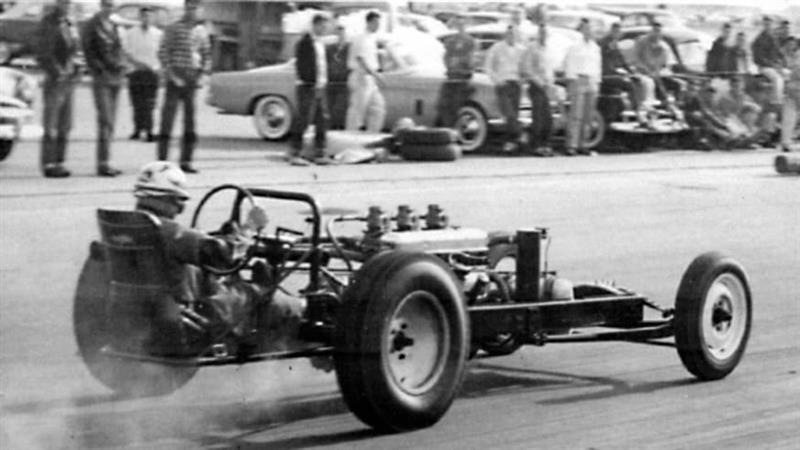
Were They Really The First?
Leslie claimed that the first Santa Ana drags actually took place a month earlier. “CJ Hart ran two races that nobody knows about,” he told me. “People have told me they didn’t happen. Creighton Hunter told me I was crazy. But I was there. Word got out among the racers that they were taking place—they were only for the racers.”
Those two June races, like the races in Goleta, at Mile Square, and other locations (including the streets) were grassroots activities. What was different about July 2 in Santa Ana was that the races were scheduled, organized, and official. And they were publicized.
“There were hundreds of spectators at those races,” Leslie said. “In later days there was a small grandstand, but in the early days, spectators lined up along the strip, sitting on the front of their cars or standing. Telephone poles on the ground along the strip kept the spectator cars away from the racing. People were supposed to stand behind the poles, but they would sit on them. A lot of people would just sit in their cars.”
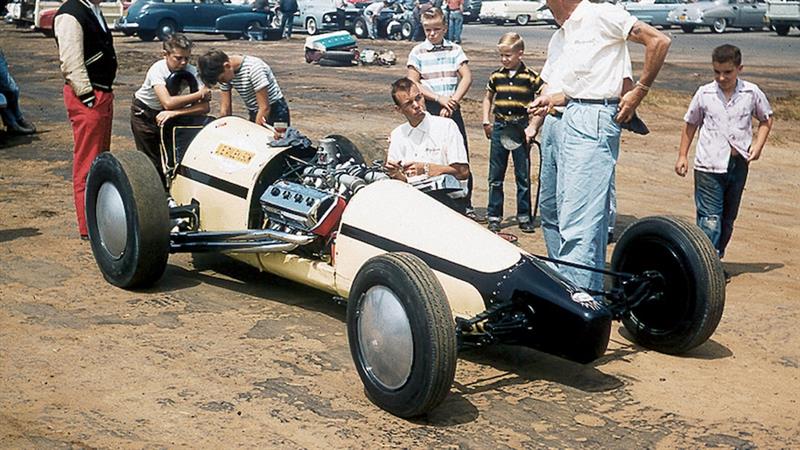
Rolling Starts And Perilous Stops
“For at least the first three years it was all rolling starts—and it was more than a quarter mile. The racers started back against the fence, and it was actually even a little bit downhill back there. CJ would stand out in front. The cars would accelerate together, CJ would drop the flag, and they’d have a race.
“The strip was wide—200, maybe 300 feet. It looked great to the spectators, but once you crossed the finish line, you’d better be ready to slow down. It turned into a very narrow road that only went for about 500 feet and curved to the right, with a drop-off on the left. If you couldn’t get stopped, you dropped off the end of the curve, and you were in the tall weeds waiting for somebody to come get you. I plowed through them a lot of times.”

Elapsed Time Vs. Top Speed
“In the early days, it was all about top speed. They didn’t have e.t. lights. They had electronic timers at the finish line—with a photocell on each side to time miles per hour. Some racers didn’t understand how they could lose a race even though they had a faster car.
“I was ‘the college student,’ so guys would come up to me and ask me, ‘Look, I just went 2 miles an hour faster than that guy, and he beat me. How could that be?’ I’d explain that it’s not about top speed, it’s about elapsed time. The race is won or lost right off the line. Later on, they put in e.t. lights.”
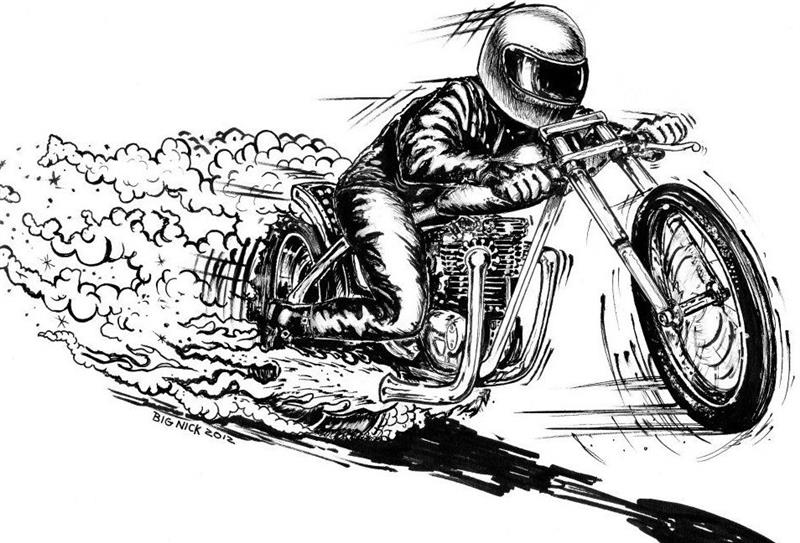
The Beginning Comes To An End
By the mid-’50s, Hunter and Stillwell were no longer involved at Santa Ana, but Hart continued until the last race on June 21, 1959. By that time, drag racing had spread across the United States. Today, at age 70, drag racing is bigger, quicker, faster, more expensive, more commercial, and more popular than anybody could have imagined.
Computer-equipped Top Fuel dragsters running at multi-million-dollar arenas are clocking mind-blowing elapsed times in the mid-3-second range at top speeds way beyond 300 miles per hour. It all started with a bunch of hot rodders trying to beat each other to the finish line at an out-of-commission airfield in Santa Ana.
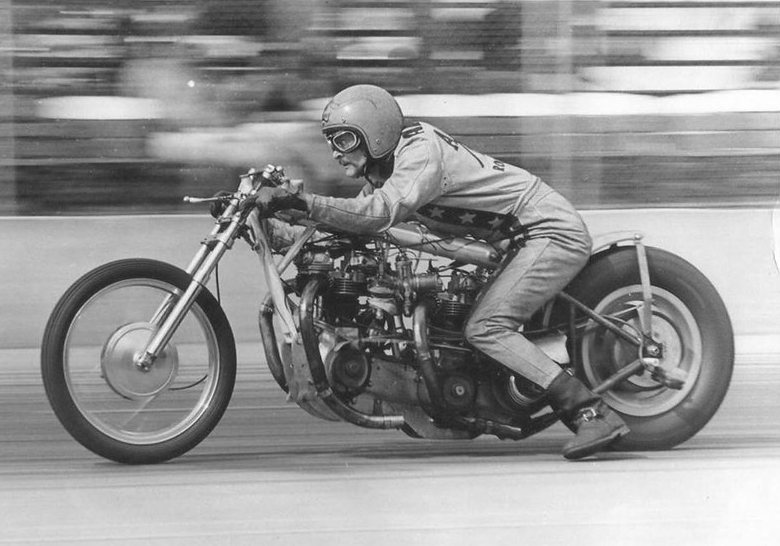
How Did Drag Racing Become A Quarter Mile?
We’ve always heard it had something to do with horse racing—or the distance of city blocks. Could it be that 1,320 feet became the first official distance of a drag race by accident?
In defense of the horse racing theory, we can point to Gray Baskerville’s 2001 Rod & Custom story, “The Legend of the Car That Raced the Horse.” According to that story, the standing quarter mile became the original dragstrip length because of an unusual race in 1944 between Pete Henderson’s 1932 Ford highboy and a quarter-horse (the car won).
Leslie Long’s recollection from Santa Ana suggested a more random reason. “When they finally started to have standing starts at Santa Ana, the cars had to move away from the fence (where they had previously lined up for rolling starts). The distance that was left was a quarter mile. So, it was really an accident. It just happened to be the length of the runway.”
Leslie’s explanation is confirmed by a Wally Parks interview in the Southern California Auto Club’s Westways magazine. In that interview, Parks claimed that the quarter-mile dragstrip distance was not from horse racing, but from test runs and races at airport runways. Publicity in HOT ROD magazine (edited by Parks) and other magazines helped establish the quarter mile as the drag racing standard.
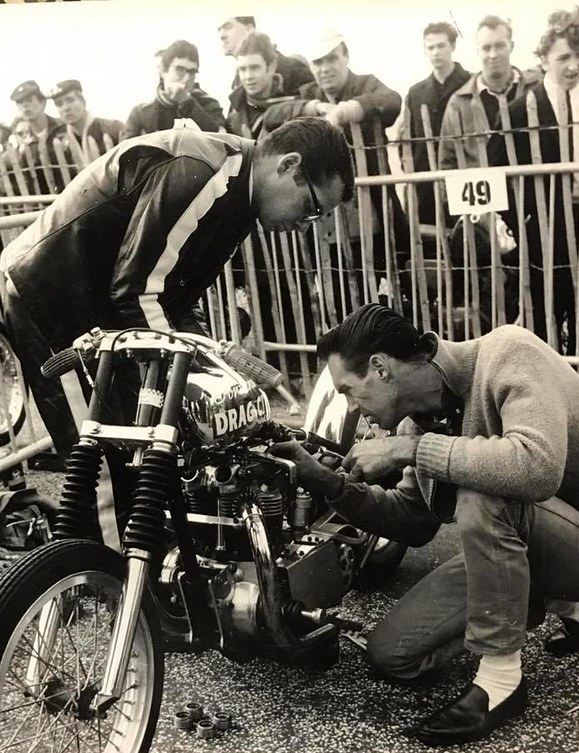
–Tim Bernsau
www.HotRod.com
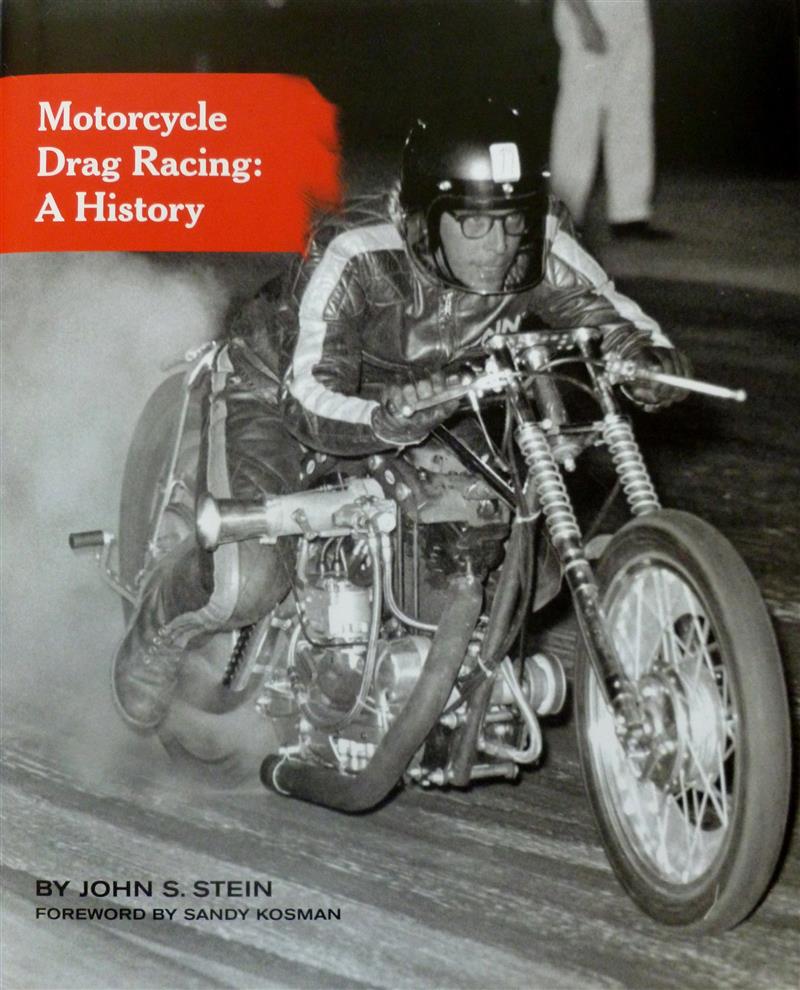
Editor’s Note: There’s also an amazing book about the history of motorcycle drag racing by a good friend of mine, John S. Stein. It’s a large black and white photo album of all the greats. It’s still for sale on Amazon.–Bandit
Motorcycle Drag Racing: A History Hardcover – January 1, 2011
by John S. Stein
There is a line in a Lovin’ Spoonful song that says, “It’s like trying to tell a stranger about rock ‘n roll.” Motorcycle drag racing is a bit like that. To those who follow it, the sport makes perfect sense. To those who don’t, it makes none at all. This book is for both.
At 244 pages and nearly 3 pounds, this book is quite large. With so much to explore, it had to be. Organized motorcycle drag racing began nearly 60 years ago, and an incredible amount has happened since then. While much of the change has involved the machinery—and the book discusses it in great detail – it is the people that make the sport so fascinating. And in the book, more than 500 of them are discussed.


